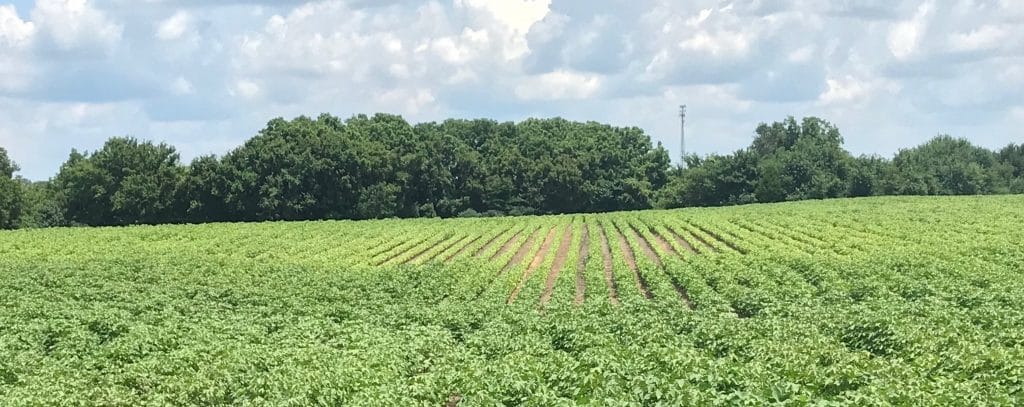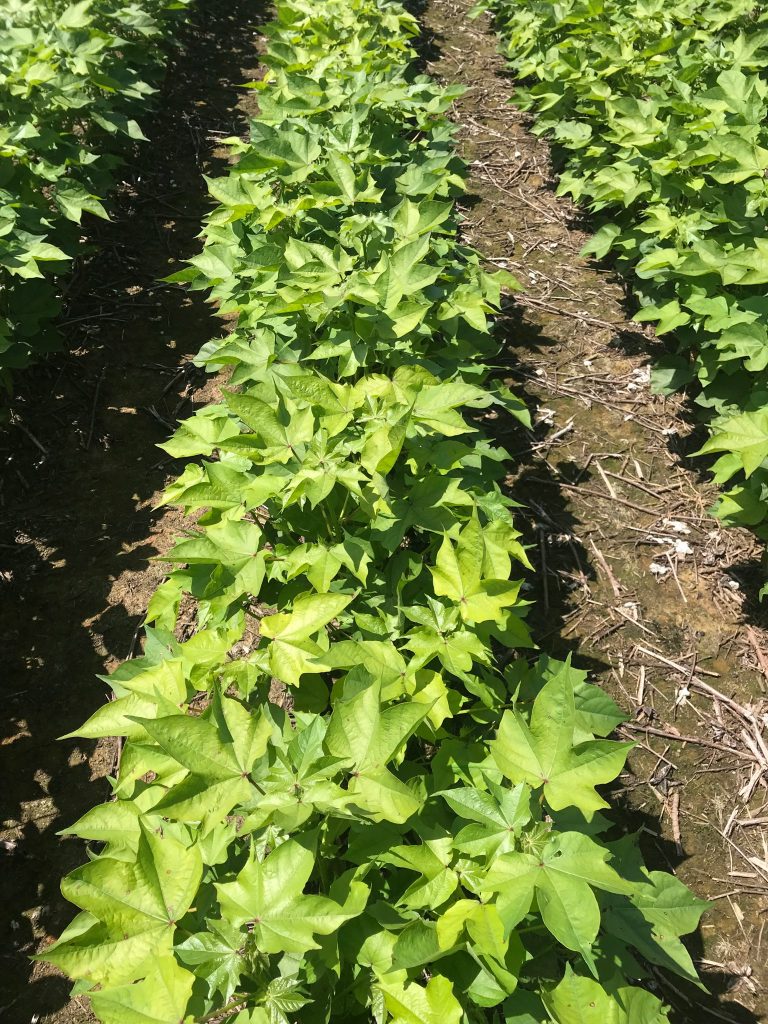 Over the past month, I’ve received several images of sulfur deficiencies in cotton. While we are quickly approaching a point in which a sulfur fertilizer application will be unable to impact yield in 2019, understanding what a sulfur deficiency looks like may help identify areas which will likely respond to the nutrient during the 2020 season. This blog covers the characteristics of a sulfur deficiency, presents atmospheric deposition data, and highlights current UT recommendations for the nutrient in cotton production.
Over the past month, I’ve received several images of sulfur deficiencies in cotton. While we are quickly approaching a point in which a sulfur fertilizer application will be unable to impact yield in 2019, understanding what a sulfur deficiency looks like may help identify areas which will likely respond to the nutrient during the 2020 season. This blog covers the characteristics of a sulfur deficiency, presents atmospheric deposition data, and highlights current UT recommendations for the nutrient in cotton production.
In the mid 1960s, the president of the Sulfur Institute wrote an article suggesting sulfur (S) deficiencies would become more common due to 1) the increased use of S-free fertilizers, 2) the decreased use of S in fungicides and insecticides, and 3) increased crop yields. Atmospheric deposition- the quantity of a nutrient which is deposited by the environment regardless of producer activity- has continued to decline over the past 50 years as legislation reducing S emissions took effect. The video below has been compiled by the National Atmospheric Deposition Program/National Trends Network (http://nadp.isws.illinois.edu). By clicking on the below image you will be able to watch the reduction in S deposited across the U.S. from 1986 to 2012. Pay close attention to Tennessee, particularly from the early 2000s to 2012. Keep in mind red represents 20 kg/ha sulfate, and 1 kg/ha is approximately 0.9 lb/ac. Long in short- the 20 lb/ac that was deposited in 1986 has dwindled to approximately 5 lb/ac in 2012.
At the same time, yields have continued to increase. With an increase in demand for the nutrient and a reduction in the amount applied, S deficiencies have become much more common in West Tennessee. Symptoms of an S deficiency include uniform chlorosis, or yellowing, of the canopy and stunted growth. Sulfur deficiencies are occasionally confused with Nitrogen (N) deficiencies, but the nutrients do not generate the same response. N deficiencies will result in chlorosis of the older leaves close to the bottom of the plant while the young growth near the top will remain darker green. As the plant begins to run out of N, it remobilizes N in older tissues and translocates N to younger growth; recall N is very mobile within the plant (as well as the soil). In contrast, S cannot be remobilized within the plant; it cannot salvage S from older tissues and translocate it to younger growth. Unfortunately for us, S is immobile within the plant but mobile within the soil.
A keen eye will also be able to differentiate the lighter-green color associated with a new flush of vegetative growth and an S deficiency. While the top of cotton plants growing very rapidly often have a lighter green color, nodes below the very top of the plant will be much darker. The light green color of new growth often darkens within a few days. In contrast, S deficient plants will be a more brilliant yellow and the symptoms will be fairly uniform all the way to the base of the plant. 
Frank Yin, associate professor in the Department of Plant Sciences, has evaluated the response of cotton to S applications throughout West Tennessee since 2007. His data includes over 15 site-years. Many of these site-years have been published elsewhere (see references listed on W435: Sulfur and Tennessee Row Crops). His research has suggested severe S deficiencies can result in an 8-10% yield reduction. While his research also suggested slight increases in yield could be observed with rates greater than 10 lb S/acre, yield increases were rarely observed with rates greater than 20 lb S/acre.
Our current recommendation is to apply 10 lb S per acre for cotton on soils having a coarse-textured subsoil or where deficiency symptoms have been observed in the past. I have walked a number of calls over the past three years where elemental S has been applied and severe deficiencies are present throughout the field. Elemental S must convert to sulfate to be taken up by the plant. Since this conversion takes a considerable amount of time and sulfate is very mobile within the soil profile, it is difficult to predict when elemental S will be available to the plant. Even worse, elemental S is rather difficult to apply evenly across the field.
As a result, I prefer to run ammonium sulfate (21-0-0-24S). Applications of 50 lb ammonium sulfate per acre will provide approximately 12 lb S and will be available to the plant almost immediately after an incorporating rainfall.
If you would like to know more about S in cotton or other row crops grown in Tennessee, take a look at W435: Suflur and Tennessee Row Crops.

